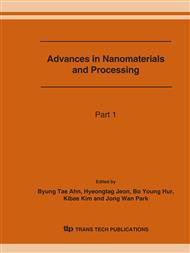p.683
p.687
p.691
p.695
p.699
p.703
p.707
p.711
p.715
Mechanical Properties and Fabrication of Silicon Carbide Ceramic by NITE Method
Abstract:
Nano infiltration transient eutectic ceramic (NITE-SiC) was fabricated by hot pressing method using Al2O3 and Y2O3 as sintering additives. The ratio of the Al2O3/Y2O3 additives was changed between 6:4 and 4:6. The densification and mechanical properties were investigated for the sintered temperature. The starting powder was high purity β -SiC nano-powder with an average particle size of 30nm. The bending strength characterization and densification of NITE-SiC was investigated by the FE-SEM and three point bending test.
Info:
Periodical:
Pages:
699-702
Citation:
Online since:
June 2007
Authors:
Price:
Сopyright:
© 2007 Trans Tech Publications Ltd. All Rights Reserved
Share:
Citation:


